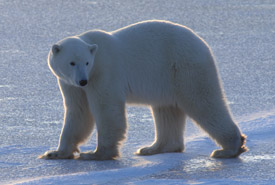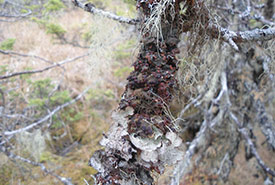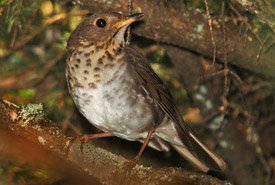More endangered than pandas: 40 Canadian species at risk of global extinction
Earlier this month, a conservation success story resonated around the world. The giant panda, perhaps the preeminent poster species of nature conservation, was down-listed from a global status of endangered to vulnerable on the International Union for the Conservation of Nature (IUCN) Red List of Threatened Species. Decades of conservation work, including establishing new nature reserves, creating wildlife corridors and working with local communities have shown results and population numbers of wild giant pandas are on the rise. A testament to how focussed conservation efforts can recovery rare species.
Glimpses of panda recovery should give us hope, but there is still much work to be done. The number of Red List species continues to climb around the world, and today sits at almost 24,000. So far in 2016, more than 1,400 species have been assessed as vulnerable, endangered or critically endangered by the IUCN. Our planet’s most threatened inhabitants that we are at risk of losing for future generations.

Polar bear (Photo by Andrew Derocher)
Canada has not been immune to global trends of species loss and endangerment. The number of Canadian species on the IUCN Red List of Threatened Species has more than doubled since 2010. While some of these species such as the polar bear, sea otter or whooping crane are in the public eye, the fate and future of many is guarded by a just handful of committed Canadians.
As the number of Canada’s IUCN Red List species continues to grow, we find ourselves with 40 species that are now more endangered than the giant panda. These are Canadian species that have been assessed as critically endangered or endangered. They are facing a very high risk of extinction in the wild in the immediate or near future on a global scale.

Globally rare boreal felt lichen. (Photo by Mac Pitcher)
Some of these species are marine mammals and fishes (such as fin whale or Atlantic bluefin tuna) that have large ranges, and recovery will require multi-national cooperation. But many of these species have all or large portions of their global range in Canada. Their endangerment the result of our actions. Their recovery our responsibility.
The Nature Conservancy of Canada (NCC) has an important role to play in protecting Canada’s IUCN Red List species, particularly those in southern Canada that are most threatened by habitat loss. IUCN Red List species that have been assessed as critically endangered or endangered and that are found on NCC properties include:
- American eel
- Blanding's turtle
- boreal felt lichen
- copper redhorse
- rusty patched bumble bee
- spotted turtle
- western prairie fringed orchid
- whitebark pine
- wood turtle

Bicknell's thrush (Photo by Serge Beaudette)
NCC also protects and manages habitat for many vulnerable species, such as sprague's pipit, semipalmated sandpiper, Bicknell's thrush, white lady's slipper and caribou.
In addition to 40 critically endangered or endangered species, Canada has 78 species that have been assessed by the IUCN as vulnerable (the same status as the giant panda).
We should expect the list to grow as additional species are assessed, and the population and range of some species continues to decline. These assessments are critical for tracking both our successes and failures in conservation. This information also helps NCC to identify important areas for conservation, and globally IUCN Red List species are being used to identify key biodiversity areas.
Species protection is a cornerstone of conservation. Slowing, and ultimately reversing, the current trend of species loss is one of the greatest conservation challenges we face in Canada. While the copper redhorse may never receive the same level of public attention as the giant panda, and there is unlikely to be a popular plush-toy made of the boreal felt lichen, our Canadian Red List species are critical for conservation. They also point to how our work at NCC not only protects rare Canadian biodiversity, but helps safeguard biodiversity on Earth.


